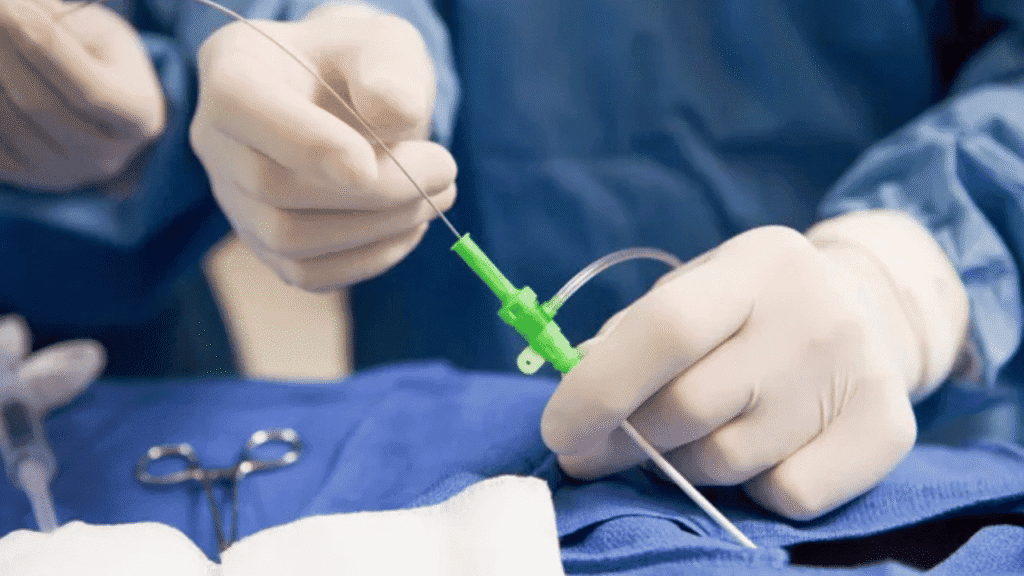A cath lab tech, or cardiac catheterization technologist, assists cardiologists during procedures to diagnose and treat heart conditions. They operate imaging equipment, monitor patients, and ensure a sterile, accurate, and efficient workflow in the cath lab.
Understanding the Role of a Cath Lab Tech
Cardiac catheterization is a critical procedure used to evaluate and treat various heart conditions. A cath lab tech plays an integral role in these procedures, often acting as the operational bridge between the cardiologist and the medical technology involved. Their duties include everything from setting up diagnostic equipment to supporting emergency interventions like stent placements. The precision, care, and knowledge they bring into the lab directly impact patient outcomes and procedural success.
Key Responsibilities in the Cath Lab
A cath lab tech’s job goes far beyond routine support. Their core responsibilities include:
– Preparing Equipment and the Lab
They ensure all machinery, such as fluoroscopy and intravascular ultrasound devices, are operational and sterile.
– Patient Support and Preparation
From helping patients get settled to attaching monitoring devices, cath lab techs are often the patient’s first point of comfort.
– Assisting Cardiologists During Procedures
Technologists assist in guiding catheters, injecting contrast dye, and monitoring images and vital signs throughout the process.
– Post-Procedure Care
After procedures, they assist with wound care, move patients safely, and help with recovery monitoring before discharge or transfer.
Education and Certification Requirements
Becoming a cath lab tech requires specialized training. Here’s a breakdown:
– Educational Path
Typically, an associate’s or bachelor’s degree in cardiovascular technology, radiology, or a related allied health field is required.
– Certifications
Most employers seek certification such as:
-
RCIS (Registered Cardiovascular Invasive Specialist) by CCI
-
ARRT credentials for radiologic technologists working in interventional procedures
– Clinical Training
Hands-on clinical experience is a crucial part of any training program. Most students complete rotations in cath labs under expert supervision.
Skills Every Cath Lab Tech Must Have
Besides formal qualifications, a cath lab tech must have:
-
Critical Thinking and Problem-Solving
-
Strong Communication Skills
-
Excellent Hand-Eye Coordination
-
Attention to Detail
-
Ability to Remain Calm Under Pressure
-
Empathy and Professionalism
These skills help build trust with both patients and the medical team, aligning perfectly with Google’s EEAT principles.
A Typical Day in the Life of a Cath Lab Tech
A cath lab technologist’s day starts with checking equipment functionality and reviewing scheduled procedures. Throughout the day, they rotate between roles—assisting with diagnostic cardiac catheterizations, setting up sterile fields, monitoring patients, or preparing labs for emergency interventions.
During procedures, the tech ensures accurate imaging and patient monitoring, responding quickly to the cardiologist’s instructions. Each case may be different, ranging from routine assessments to complex angioplasties. After each procedure, the tech helps with documentation and cleanup.
Why Cath Lab Techs Are Crucial to Cardiac Care
Cardiac procedures can be life-saving, especially in acute coronary syndromes. Cath lab techs make it possible for cardiologists to work effectively and safely. Their knowledge of anatomy, radiation safety, and advanced medical imaging allows them to support decisions that may directly impact whether a patient lives or dies.
Their role in cardiac teams aligns closely with EEAT principles:
-
Expertise: They understand complex anatomy and procedures.
-
Experience: Hands-on work in dynamic, high-pressure environments.
-
Authoritativeness: Certified by national boards like CCI and ARRT.
-
Trustworthiness: Responsible for patient safety and sterile conditions.
Career Outlook and Advancement Opportunities
According to industry reports, cardiovascular technologists are in high demand. The U.S. Bureau of Labor Statistics projects growth in this field as heart disease remains a leading health concern.
Career Advancement Options:
-
Move into supervisory roles
-
Specialize in electrophysiology or peripheral vascular procedures
-
Train other staff or become an applications specialist for medical device companies
-
Transition into nursing or physician assistant careers
Conclusion:
If you’re asking “What does a cath lab tech do?”—the answer is that they are the heartbeat behind the scenes of critical cardiac interventions. From prepping labs and supporting physicians to monitoring patient health, they bring accuracy, compassion, and life-saving support into the cardiac catheterization suite.
Becoming a cath lab technologist is more than a career—it’s a calling to serve, heal, and make a measurable difference in people’s lives every day.



